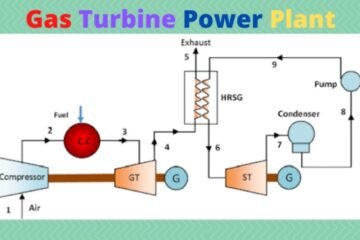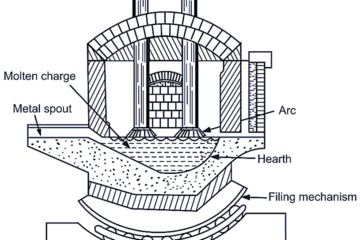Boiler Gauge Glass Blow Through Procedure : Blow through of Boiler Gauge Glass is Done to ensure accurate reading of the water level in the boiler and to remove any debris, sediment, or scale that may have accumulated in the gauge glass and its connections.
boiler gauge glass blow through procedure Step by Step
Step-by-Step Instructions:

- Isolate the Steam Connection: Close the steam valve to prevent steam from entering the gauge glass.
- Isolate the Water Connection: Close the water valve to prevent water from entering the gauge glass.
- Drain the Gauge Glass: Open the drain cock located at the bottom of the gauge glass to allow the contents to drain completely.
- Wait for Drainage: Allow the gauge glass to drain completely before proceeding.
- Clear the Steam Connection: Open the steam valve to allow steam to flow through the connection and clear any debris or condensate.
- Close the Steam Connection: Close the steam valve to prevent further steam flow.
- Clear the Water Connection: Open the water valve to allow water to flow through the connection and clear any debris or sediment.
- Wait for Complete Drainage: Allow the water connection to drain completely before proceeding.
- Close the Drain Cock: Close the drain cock to prevent further drainage.
- Refill the Gauge Glass: Open the water valve to allow water to refill the gauge glass.
- Open Steam Valve : Open the steam valve to check the water level in the boiler, ensuring it is within the recommended range.
Note: This procedure should be performed daily to ensure the accuracy and reliability of the boiler’s water level indication.
procedure of Boiler Gauge Glass in Table form
| Step | Procedure |
|---|---|
| 1. | Isolate the Steam Connection |
| – Close the steam valve to prevent steam from entering the gauge glass. | |
| 2. | Isolate the Water Connection |
| – Close the water valve to prevent water from entering the gauge glass. | |
| 3. | Drain the Gauge Glass |
| – Open the drain cock located at the bottom of the gauge glass to allow the contents to drain completely. | |
| 4. | Wait for Drainage |
| – Allow the gauge glass to drain completely before proceeding. | |
| 5. | Clear the Steam Connection |
| – Open the steam valve to allow steam to flow through the connection and clear any debris or condensate. | |
| 6. | Close the Steam Connection |
| – Close the steam valve to prevent further steam flow. | |
| 7. | Clear the Water Connection |
| – Open the water valve to allow water to flow through the connection and clear any debris or sediment. | |
| 8. | Wait for Complete Drainage |
| – Allow the water connection to drain completely before proceeding. | |
| 9. | Close the Drain Cock |
| – Close the drain cock to prevent further drainage. | |
| 10. | Refill the Gauge Glass |
| – Open the water valve to allow water to refill the gauge glass. | |
| 11. | Verify Water Level |
| – Open the steam valve to check the water level in the boiler, ensuring it is within the recommended range. |
Note: This procedure should be performed daily to ensure the accuracy and reliability of the boiler’s water level indication. Each step ensures proper isolation, draining, clearing, and verification of the gauge glass, maintaining operational safety and efficiency.
purpose of Boiler gauge Glass
The purpose of this procedure is to:
- To ensure the accuracy and reliability of the boiler’s water level indication.
- Remove any debris, sediment, or scale that may have accumulated in the gauge glass and its connections.
- Prevent any potential damage to the gauge glass or boiler due to clogging or corrosion.
- Maintain the overall safety and efficiency of the boiler operation.
Why need to blow down the boiler water ?
- Boiler blow down is made to reduce the density of salt and to remove the dissolved and suspended solids, also the floating solid impurities in the boiler system.
- If there are not removed from the boiler water system, foaming, priming, corrosion will occur in the boiler steam space and feed water system.




[…] gauge glass blow through procedure […]
[…] Significance of regular partial Boiler blow down: […]